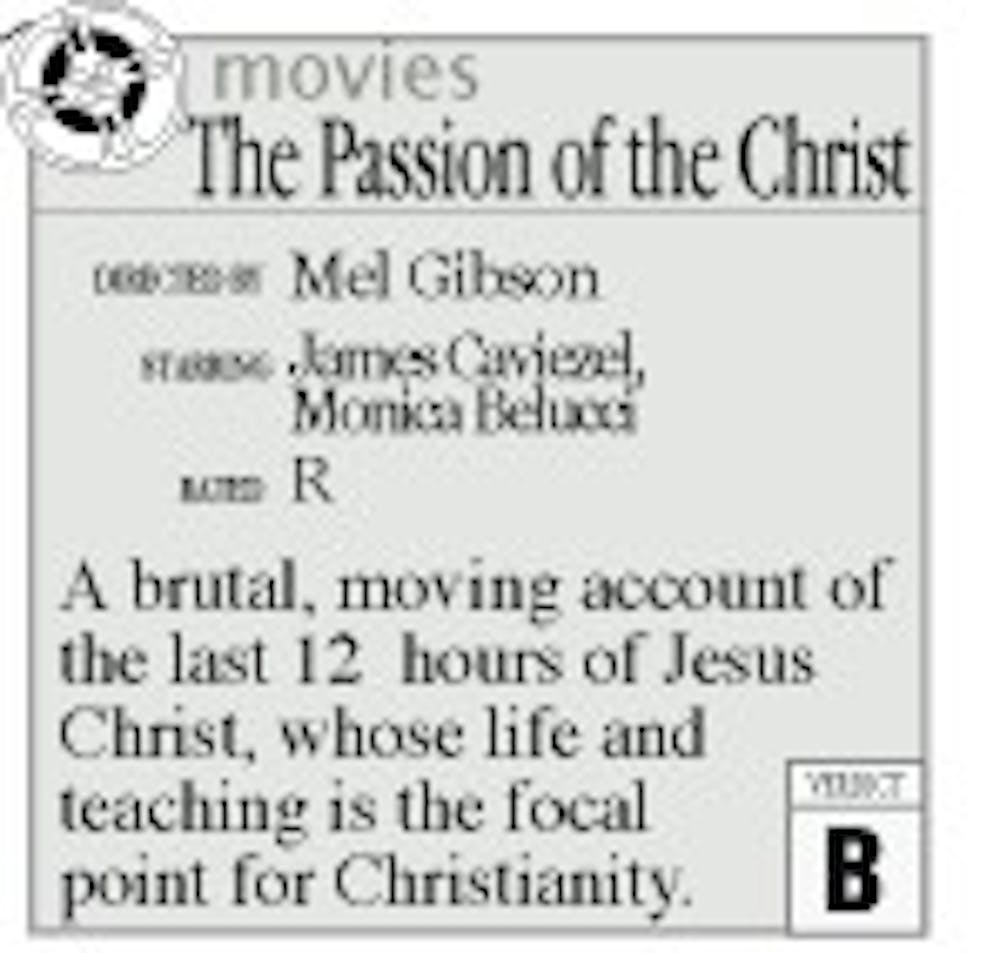Mel Gibson's "The Passion of The Christ" is an uneven, but engrossing film. As Gibson has stated in numerous interviews, his intention was to accurately depict the last 12 hours of the life of Jesus of Nazereth, based on the four Gospels combined with historical research.
In this sense, Gibson was successful. The movie was expertly made and is marvelous to look at.
Maurizio Millenotti's costumes and Carlo Gervasi's set designs are stunning. Every scene looks authentic. Special consideration should be given to the scenes in Herod's court and the Roman soldiers' uniforms.
Cinematographer Caleb Deschanel masterfully uses lighting to give each scene its own mood. The most notable is the opening scene, in which Jesus is arrested while praying in the Garden of Gethsemane by moonlight.
Even the scenes of extreme violence - and there are many of them - provide visual depth. The movie is 126 minutes long and at least 100 of those minutes show Jesus being beaten, whipped and bloodied. Aside from the opening scene, the only times Jesus is calm and collected are the brief flashbacks that pop up regularly throughout the film.
But what the movie provides in visual spectacle, it lacks in dramatic merit.
Though it was Gibson's intention to focus solely on Jesus's condemnation and crucifixion, the movie is all release and no tension. There is no back-story or character development. When Mary is weeping at Jesus's feet or when Judas hangs himself, audience members unfamiliar with the New Testament will not feel the implied meaning of these intense scenes.
Perhaps Gibson assumed his audience members already have a working knowledge of the Gospels and did not feel it necessary to explain the motivations of their actions. Unfortunately, this lack of background traps the characters into their reactions to what it happening, rather than letting their emotions develop over the course of the movie.
The actors do what they can with the screenplay, which was co-written by Mel Gibson and Benedict Fitzgerald, with much of the dialogue taken directly from each of the four Gospels.
As Jesus, James Caviezel does not create a character so much as he creates a tangible representation of the suffering depicted in the Bible. The only character who emerges well developed is Pontius Pilate, portrayed by Hristo Shopov, as a conflicted judge who initially tries to save Jesus before submitting to the demands of the public.
In addition, Gibson does not put much effort into creative symbolism. During the first scene, while Jesus is praying in Gethsemane by the moonlight, he looks up at the full moon numerous times while praying to God, his Father. When clouds drift by and cover the moon, Jesus falls to his knees in a weakened state. After the clouds pass by and the moon shines brightly again, Jesus is able to stand up. Scenes like these spell out the implied symbolism and make them laughable, rather than effective.
Despite these shortcomings, Gibson accomplishes his goal of reminding devout Christians that the Crucifixion was a painful, intense and bloody event that probably happened as shown in the movie. To say that Jesus suffered immensely for the sins of mankind is one thing. To display it so close-up, so unflinchingly is quite another.
Hyped-up criticism and controversy notwithstanding, Gibson has done exactly what he set out to do. Though the dramatic development of the movie is non-existent, the technical skill and drive of the film are reasons enough to see it.





